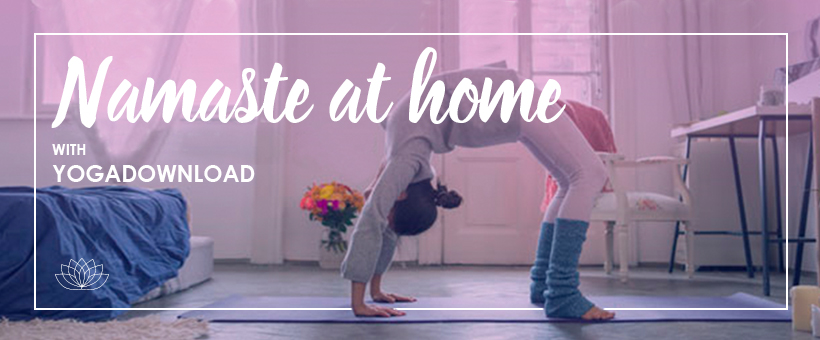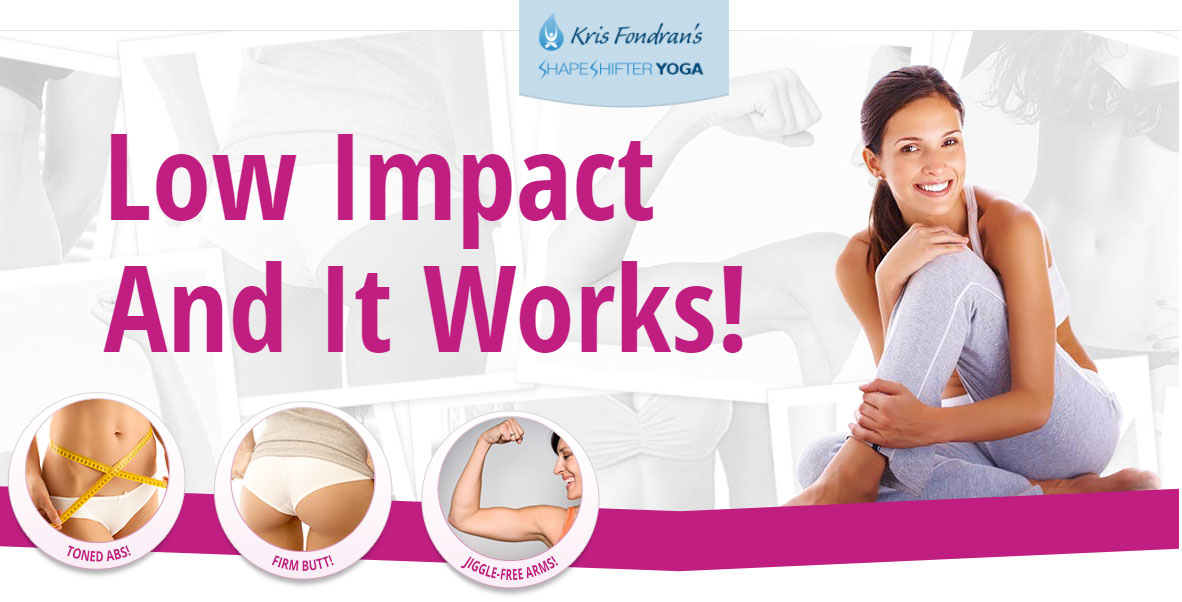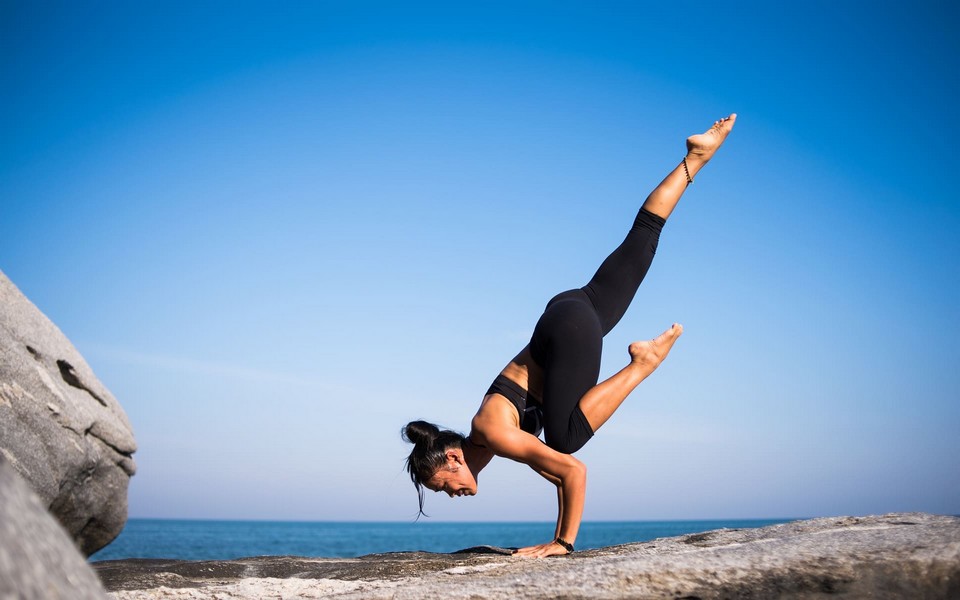Hatha Yoga : the guide for beginners
Reputed to be the most widespread form of yoga in the West, Hatha Yoga is an excellent way to use the postures of this discipline to develop a sense of well-being through the many benefits of yoga.
However, these are not the only benefits of Hatha Yoga, quite the contrary. As beneficial for our health as for our morale, it is certain that its practice will make you benefit from many virtues in your daily life. To learn more, here is the essential information to know about this kind of yoga.
The origins of Hatha Yoga
Like other forms of yoga, Hatha Yoga was born in India. According to historians, it would have been codified during the 15th century and is based on Tantric and Shivaite influences. It was not until the 20th century that Hatha Yoga reached the West. After that, it quickly became popular and became the most practiced form of yoga in that part of the world.
What is Hatha Yoga?
If one translates the term Hatha Yoga literally, one discovers that this expression means, in Sanskrit, "yoga of liveliness" or "yoga of tenacity".
Concretely, its goal is to unify all energies, whether those of our body, those of our mind, those of the sun or those of the moon. In fact, it is a rather gentle practice of yoga that is opposed to other forms such as Ashtanga or Vinyasa. For many, it is the perfect device to familiarize oneself with the different postures of yoga, while learning how to control one's breathing correctly.

The main characteristics of Hatha Yoga
Within Hatha Yoga, there are three essential points:
• the breath
• meditation
• static postures
The postures will be named Asanas and will be performed over a fairly long period of time. Generally, it is best to hold a posture for about three minutes to maximize the benefits. Upon closer examination, the postures are an excellent way to prepare the body for the meditation phase that comes with each Hatha Yoga session.
It should be noted that they will also come to participate in the harmonization of our body and the balance of energies. Breathing will be associated with each of the postures and can be found under the name "pranayama". It is essential for our organism to be able to oxygenate itself correctly and to free itself from certain tensions.
In Hatha Yoga, we find different kinds of breathing that can be used such as fire breathing. Finally, this yoga will also be characterized by a meditation phase called Dhyâna, which takes place in the lotus position.
What equipment do I need to practice Hatha Yoga?
The only equipment you will need to practice Hatha Yoga is a floor mat and appropriate clothing. The mat must be thick enough to be comfortable for the different postures. If you go to a studio, you will most likely have yoga mats at your disposal. If you attend regular sessions, you may consider investing in your own mat. In terms of clothing, it is recommended that you choose clothes in which you feel comfortable and which allow you a good freedom of movement. We invite you to discover our yoga mat buying guide or our selection below at Amazon:

Hatha Yoga : 5 essential postures
1 - The posture of the cobra - Bhujangasana
To be able to realize it, you will have to lie down on your belly and stretch your legs well. Then, you will have to place your palms on the floor, just below your shoulders. When you take a breath, you will have to gently lift your chest, then hold the position for two breaths. Then, you will have to lower your chest to the floor while you exhale.
2 - The posture of the boat - Paripurna-navâsana
The boat posture is one of the musts of Hatha Yoga and she starts lying on her back with her legs stretched out. The first time you breathe in, you will have to raise your legs, while making sure to keep them straight. Afterwards, you will have to grab your calves with your hands, making sure to keep your back straight.
3 - The posture of liberation from the winds - Pavanamuktasana
Once again, you will have to lie on your back. You will then have to bring your knees back to the level of your chest by putting pressure on your belly. As you exhale, you will have to try to touch your knees with your chin.
4 - The posture of the board - Kumbhakâsana-dandâsana
This time, you will have to lie on your stomach and put your hands on each side of your shoulders. Then, you will have to push on your hands to raise your body. The goal is to stay as straight as possible by forming a line with your whole body.
5 - The posture of the bow - Dhanurasana
This posture of Hatha Yoga also requires lying on your stomach. Once on the ground, you will have to bend your knees in order to be able to catch your ankles with your hands. While breathing in, you will raise your head and look straight ahead.
The benefits of Hatha Yoga
1 - On the physical level
From a physical point of view, Hatha Yoga can be an excellent way to get rid of the tensions in your body. It also helps to tone muscles and increase flexibility. You will also be able to take advantage of it to develop your breathing capacities, which will be felt on a daily basis.
Some people can also take advantage of Hatha Yoga to get rid of certain chronic ailments. For example, it is not uncommon to see people suffering from back pain take advantage of this form of yoga to relieve themselves.
2 - On the mental level
Practicing Hatha Yoga allows to work on some of his mental faculties such as, for example, his ability to concentrate. As you practice, you will find that you will find it easier to focus on a particular subject. In addition to this, Hatha Yoga also offers you a better relaxation of the mind on a daily basis.
3 - Emotionally
Like all other forms of yoga, the practice of Hatha Yoga will provide you with some emotional benefits. First of all, you will be able to use it to reduce the feeling of stress in your daily life or to alleviate your anxieties. In the long run, you will also find that it will help you sleep better and more comfortably.

Who is Hatha Yoga for?
Unlike other forms of yoga that are a little more dynamic, Hatha Yoga is truly for everyone. Concretely, you can find different levels for the classes in order to adapt to each profile.
In fact, you don't need any prerequisites to be able to follow a Hatha Yoga session and enjoy all the benefits it offers. This discipline can be particularly beneficial for people who are stressed out on a daily basis and would like to relieve pressure or for those who suffer from back pain and are looking for a gentle technique to relieve their bodies of certain tensions.
How does a Hatha Yoga session take place?
Depending on the yoga studio you are going to, the course of the session may vary. Generally, a Hatha Yoga class is considered to last between 1 hour and 1h30 to be fully effective.
In the majority of sessions, we start with breathing exercises in order to assimilate them properly. These will also allow your body to be relaxed and in the best conditions to develop the different postures that will be asked of you.
Before moving on to the asana stage, there will be the sun salutation stage which will serve as a warm-up. After this, your body will be ready for the session and it will be possible to start the sequence of the different postures. At the end of the session, you will be led to a relaxation session that will help you to totally calm your mind and put you in good conditions to resume your daily life.

Hatha Yoga: the most frequently asked questions
How to find a studio near you?
Since Hatha Yoga is the most popular form of yoga in the West, you won't have any trouble finding a studio that offers you a suitable session. However, to find a class that suits you perfectly, be sure to take into account different criteria.
Some people will be more comfortable in small groups than in larger group classes. Likewise, be sure to take into account your level so that you don't feel too lost. In order to find the right studio, don't hesitate to ask for advice from those around you. This will allow you to have an objective opinion on the quality of the Hatha Yoga classes given there.
Ashtanga or Hatha Yoga
When choosing between Ashtanga and Hatha Yoga, there will be different points to take into account: your desires and your physical ability.
Unlike Hatha, Ashtanga yoga is considered a dynamic yoga that will require you to have a good physical capacity. If you are sporty and want a session that involves different parts of your body, you can turn to Ashtanga.
Otherwise, Hatha Yoga remains the best solution. It will allow you to have a first approach with yoga and to work on the postures and breathing. Nothing prevents you, when you feel ready, to take up other forms of yoga.
To go further
If you want to know more about Hatha yoga and become totally versed in it, you can turn to various particularly complete books on the subject.
If you are looking for a discipline to accompany you in your daily life in a feeling of well-being, Hatha Yoga is certainly the one for you. By practicing regularly, you will be able to benefit from virtues on a physical, mental or emotional level. Have you already used this technique?


